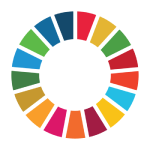Turning Waste into Opportunity: UNY Students Transform Orange Peels into Eco-Friendly Solution for Batik Waste
Submitted by admin on Wed, 05/07/2025 - 14:22


A group of forward-thinking students from Universitas Negeri Yogyakarta (UNY) is proving that sustainability can start with something as simple as an orange peel. Led by Biology student Jalu Bahtiar Baharudin, the team has found a way to transform discarded orange peels into a bioadsorbent capable of treating wastewater from Yogyakarta's batik industry. This innovative project, part of the 2024 Student Creativity Program (PKM) in Exact Research, addresses two critical environmental challenges: textile pollution and organic waste.
Yogyakarta's famous batik industry, while culturally rich, produces large amounts of wastewater filled with harmful synthetic dyes. At the same time, the bustling markets and juice vendors across the city generate piles of orange peel waste every day. "We wanted to turn local waste into local solutions," shared Jalu. Through careful research, the team discovered that the pectin found in orange peels has powerful natural properties that can bind to toxic dye particles, effectively filtering them out of wastewater.
Their process is beautifully simple and sustainable. The team collected discarded orange peels, processed them into a fine powder, and tested them in the lab. The results were promising—the bioadsorbent significantly reduced dye concentrations in batik wastewater, making the water safer to return to the environment. "It’s inspiring to see waste become a solution," Jalu added. The innovation not only prevents pollution but also gives a second life to what would otherwise be trash, contributing to a circular economy mindset.
This project reflects a growing awareness among young innovators at UNY about sustainable living and responsible waste management. By transforming organic waste into a valuable resource for pollution control, the students demonstrate how local solutions can contribute to global sustainability goals. "If we can solve two problems—waste and pollution—with one simple idea, imagine the impact if more people did the same," Jalu remarked with hope.
UNY’s support for this student-led project highlights its commitment to sustainability and community impact. Through initiatives like this, UNY not only educates its students about environmental responsibility but also empowers them to make real-world changes. The students’ success serves as a powerful reminder that sustainable solutions are possible when innovation, local resources, and community awareness come together.
Category:
Research






